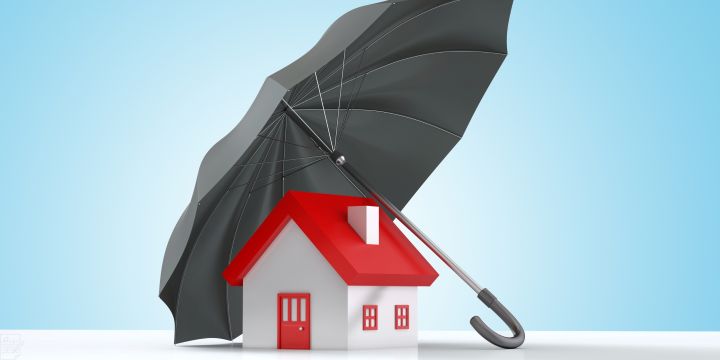
Understanding Home Insurance Deductibles
Key Takeaways:
- Learn about how deductibles affect home insurance policies.
- Understand the different types of deductibles and their financial implications.
- Find strategies for selecting the right deductible for your situation.
Table of Contents:
- Introduction to Home Insurance Deductibles
- How Deductibles Work
- Types of Home Insurance Deductibles
- The Financial Impact of Choosing a Deductible
- Strategies for Choosing the Right Deductible
- Common Misunderstandings About Deductibles
- Final Thoughts on Home Insurance Deductibles
Introduction to Home Insurance Deductibles
Home insurance is a cornerstone of financial security, safeguarding your most significant investment against unexpected perils. Within this realm, understanding deductibles is fundamental for any policyholder. A deductible represents the amount you agree to pay out-of-pocket when filing a claim before your home insurance kicks in to cover the remaining costs. This simple concept has profound implications for managing risk and aligning your insurance with personal finances. While deductibles seem straightforward, comprehending their nuances can vastly affect your financial planning and how effectively your policy serves you.
Deductibles serve as the policyholder’s share in any incurred loss and are instrumental in shaping the landscape of home insurance policies. They dictate your direct financial involvement in the event of a claim, impacting how insurance premiums are structured. With significant variability in deductible amounts and types, each homeowner should endeavor to gain a clear understanding of these options. This ensures that decisions about deductibles align with individual circumstances and long-term financial goals, ultimately crafting an insurance strategy that balances cost with comprehensive protection.
How Deductibles Work
At its core, a deductible functions as a shared risk mechanism between you and your insurance provider. It mandates you contribute a set amount towards any claims before providing insurance assistance. For instance, if you carry a $1,000 deductible and face a roof repair following storm damage costing $5,000, you would cover the first $1,000 out of your pocket. The insurance company would then pay the $4,000 balance. This arrangement encourages policyholders to manage small losses independently, thus mitigating the insurer’s risk and reducing claim frequency and costs. The trade-off is seen in lower premiums for higher deductibles, as policyholders absorb more risk personally, and conversely higher premiums for lower deductibles.
This risk-sharing model shapes the fundamental economics of insurance policies. It incentivizes homeowners to be prudent custodians of their properties, minimizing prevalent small claims through routine maintenance. As a result, deductibles influence the dynamics between premium costs and financial responsibility and endorse a collaborative approach to property risk management. Thus, understanding how deductibles operate is central to navigating home insurance efficiently and aligning it with your unique financial circumstances.
Types of Home Insurance Deductibles
Fixed Deductibles
The fixed or flat deductible is the most common and straightforward type. In this model, a static dollar amount is predetermined within the policy. Homeowners appreciate its predictability, as it remains consistent regardless of claim size. This simplicity allows for better financial planning and budgeting when accounting for potential out-of-pocket expenses. With a fixed deductible, the main variable that sways decision-making is balancing this upfront cost and the monthly or annual savings in premium charges.
Percentage-Based Deductibles
Percentage-based deductibles introduce a dynamic element to home insurance calculations. These are typically calculated as a percentage of your home’s insured value. For example, if your home is insured for $200,000 with a 2% deductible, your out-of-pocket cost is $4,000. These types of deductibles are often relevant for specific risks such as windstorm or hail and are particularly common in high-risk areas. While they might offer lower premiums, the potential costs in the event of a claim can be substantial, especially as the insured value of the home increases. Policyholders need to assess the potential exposure carefully when selecting percentage-based deductibles.
The Financial Impact of Choosing a Deductible
Your deductible choice can have wide-ranging financial impacts, influencing routine premium payments and potential out-of-pocket costs when claims occur. Typically, a higher deductible translates to lower premiums, providing savings on the insurance policy’s recurring cost. Conversely, this approach elevates your financial exposure, necessitating a substantial out-of-pocket contribution when large claims occur. For cost-conscious homeowners, striking a balance between manageable premiums and the risk of larger expenses due to claims is vital. The strategy should reflect one’s financial stability and capacity to absorb such expenses without hardship.
The decision impacts risk management strategies and financial resilience. It’s advisable to consider current savings levels, emergency fund availability, and foreseeable future expenses. This comprehensive assessment aids in determining the optimal deductible level. Homeowners seeking predictability might lean towards lower deductibles, ensuring limited unexpected financial strain. In comparison, others with strong savings might prefer the premium savings on higher deductibles, accepting the risk of possible substantial payments.
Strategies for Choosing the Right Deductible
Choosing an appropriate deductible necessitates a thoughtful evaluation of your financial landscape, including savings, expenses, and risk tolerance. If you possess a robust emergency fund, opting for a higher deductible may result in premium savings without excessive risk exposure. Homeowners should also analyze risks based on geographic locations, as those in disaster-prone areas might require different considerations than those in stable environments. Additionally, consulting with a financial advisor or insurance expert can be invaluable in crafting an insurance approach tailored to your specific situation. According to financial experts, balancing savings on premiums and acceptable risk levels should reflect one’s overall financial strategy and goals.
Common Misunderstandings About Deductibles
Misunderstandings about insurance deductibles often arise, potentially leading to unforeseen financial challenges. One prevalent misconception is the notion that lower premiums always signify better deals. Frequently, lower premiums are coupled with higher deductibles, which may not favor those unable to accommodate substantial expenses unexpectedly. Moreover, some policyholders must understand how deductibles apply, mistakenly believing they apply to every expense within a claim. Some policies may have provisions that exempt smaller damages from deductible charges, like repairs under a certain threshold. This highlights the necessity of carefully reading policy details and engaging with providers for a clear understanding.
Final Thoughts on Home Insurance Deductibles
Understanding deductibles is crucial in creating a holistic home insurance strategy, offering the right mix of savings and protection. Homeowners who consider their financial standing, risk tolerance, and the unique specifics of their property are better equipped to navigate the complexities of selecting the most suitable deductible. By carefully aligning deductible choices with personal financial realities and risk assessments, homeowners secure not only peace of mind but also protect their financial and home investments well into the future. This knowledge empowers them to make informed decisions, ensuring immediate economic benefits and long-term security.



